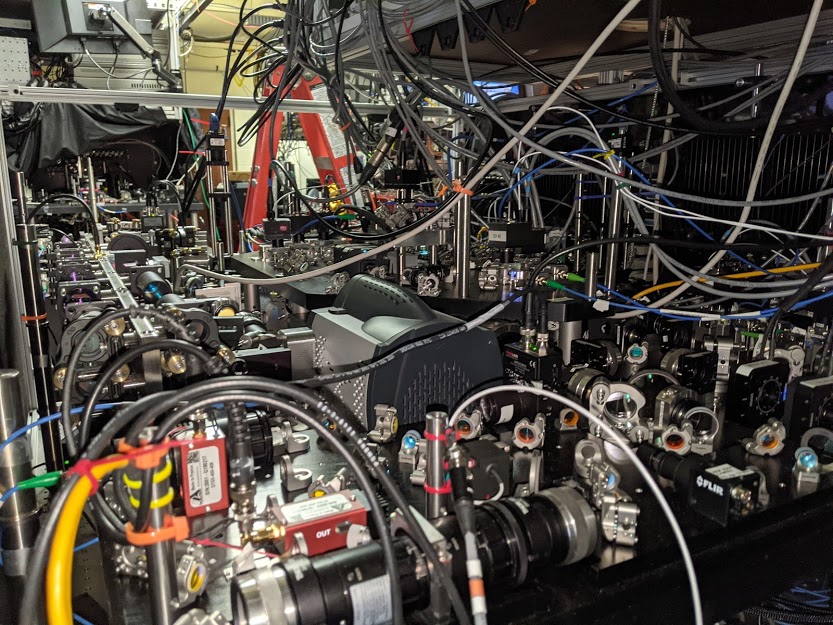EMBARGOED UNTIL APRIL 20, 2022 at 10 a.m. CDT
Contact: Mark Saffman, msaffman@wisc.edu, (608) 265-5601
What happened
- A university-industry collaboration has successfully run a quantum algorithm on a type of quantum computer known as a cold atom quantum computer for the first time. The achievement by the team of scientists from the University of Wisconsin–Madison, ColdQuanta and Riverlane brings quantum computing one step closer to being used in real-world applications.
Why it matters
- Practical quantum computers could solve complex problems, known as algorithms, that classical computers cannot. This could be beneficial for many applications, such as logistics, drug discovery and computational modeling of quantum processes.
- Running a quantum algorithm on the cold atom style of computer is a proof of concept that this approach could work.
- “There’s a race to build a useful quantum computer, and there’s a handful of different approaches that are being developed to that end,” says Mark Saffman, a physics professor at UW–Madison, director of the Wisconsin Quantum Institute, and chief scientist for quantum information at ColdQuanta. “Cold atom qubits is one of the five approaches that are actively being developed, and this paper presents for the first time the capability of running quantum circuits and quantum algorithms using cold atom qubits.”
The details
- The team, headed by Saffman, demonstrated two key achievements in a study published April 20 in the journal Nature:
- Entangled up to six neutral atoms with long lifetimes. Previous neutral atom quantum computers have used atoms in a shorter-lived state. “One of the benefits [of our approach] is that it’s a longer-lived state,” says Trent Graham, a scientist at UW–Madison and lead author of the study. “We showed that we have coherence remaining in these states on the order of up to milliseconds, whereas in the [previously-demonstrated state], it decayed three to four hundred times faster.”
- Successfully ran two quantum algorithms on their quantum computer. The first, a quantum phase estimation algorithm, is a common problem in chemistry that measures the molecular energy of an atom. The second is a strategy problem known as MaxCut, which has applications in logistics deployment and pattern recognition.
- One advantage of neutral atom qubits used in this approach is that they do not naturally interact with each other, so it is easier to control when they are “on” or “off.”
- The collaboration was key to the team’s success. The UW–Madison group conceived of and performed much of the work, ColdQuanta engineers in collaboration with the UW team designed and fabricated key subsystems of the quantum computer, and Riverlane staff contributed to circuit design, optimization and simulation.
The catch?
- The quantum algorithms were very basic. But the work suggests that quantum computers that outcompete traditional ones are on the horizon
- “These were very simple computations, but as you go to higher and higher circuit depth and more qubits, then it is actually possible to get to the regime where these problems can’t easily be calculated by classical computers,” Graham says.
- As is common with other classes of quantum computers, there is no error correction mechanism in place with this team’s computer
This work was supported by DARPA-ONISQ Contract No. HR001120C0068, NSF award PHY-1720220, NSF Award 2016136 for the QLCI center Hybrid Quantum Architectures and Networks, U.S. Department of Energy under Award No. DE- SC0019465, and via Innovate UK’s Sustainable Innovation Fund Small Business Research Initiative (SBRI). Mark Saffman is a shareholder in ColdQuanta, Inc.
—Sarah Perdue, saperdue@wisc.edu, 608-252-3051
